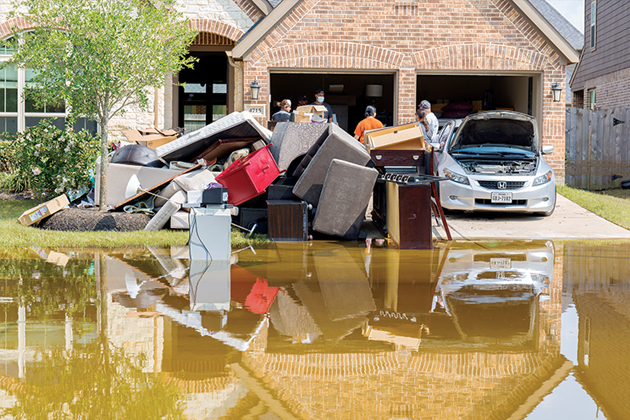
As employees continue to work from home in either a full-time capacity or hybrid model, companies need to consider the rising risk of natural disasters. When employees are expected to be productive from home, how are they to manage the demands of the “office” after their property is severely damaged and their lives are disrupted?
According to the National Centers for Environmental Information, the contiguous U.S. states suffered 20 separate billion-dollar weather and climate disasters in 2021, just two events shy of the record set in 2020. The United States is hardly alone—globally, there were 47 billion-dollar natural catastrophes last year, as climate change fuels natural disasters with increasing frequency. The human toll is devastating. These disasters continually cause more widespread destruction and damage, leaving some communities in ruin and millions of people facing physical peril as well as internet, power and other utility outages.
Having workers functioning away from a central hub can certainly have its benefits. For example, talent is distributed across different areas so it is unlikely that the entire staff would be impacted by the same disaster event at the same time. But this at-home work environment also means employers have less of a say about the types of risk mitigation efforts and preparedness measures employees will take to protect themselves and these distributed work spaces. The investments companies have made to maintain a secure, connected workplace are somewhat irrelevant when a sizable portion of their workforce is operating from a personal dwelling the organization does not control.
Catastrophic destruction can leave entire communities and infrastructures in disarray. Further, recovering home and property following a natural disaster comes with a hefty price tag, particularly for individuals. In the wake of disaster, employees can be struck by personal and financial devastation, prolonging or halting recovery and creating significant financial and emotional stress that could leave them unable to work.
Having disaster insurance is becoming even more critical for households to build greater financial resilience. However, few homeowners are aware of the gaps and limitations of their current insurance policies or how long it might take for their claim to be approved and to receive their benefits following a disaster. They may also be unaware that disaster deductibles can cost anywhere from 2% to 20% of a home’s value, or may not know about their potential underinsured exposure due to the rising cost of materials and the increased demand and cost for labor and supplies.
These costs are particularly concerning when we consider that most households are unprepared to weather an unexpected expenditure. According to Bankrate’s January 2022 Financial Security Index, just 44% of Americans surveyed said they could comfortably cover an unexpected expense of $1,000. Further, inflation is causing 49% to save even less for emergencies than in prior years. The Federal Reserve’s latest annual report on the economic well-being of U.S. households showed that more than a quarter of adults were either unable to pay their monthly bills or were one $400 financial setback away from being unable to pay their bills in full. The reality is that many workers risk financial ruin in the wake of a natural disaster, particularly when out-of-pocket recovery costs are high.
Employers can support the financial well-being of their remote employees by providing resources and tools before and after severe weather events. This can mean designing new, unique measures to address post-event concerns as well as providing preparedness resources for those who regularly work away from the office.
One way companies can help employees after a severe weather event is by providing options for temporary housing. This may help ensure workers can stay plugged in and are able to meet their basic needs. Employers can also subsidize backup power solutions and cell phone plans with mobile hotspots to support worker mobility and connectivity.
From a preparedness standpoint, companies also have a role to play in incentivizing their employees to be proactive and take steps to create their own disaster resilience plans. Family preparedness and disaster education is critical in this effort. Employers can also make disaster insurance offerings available as part of their employee benefits program to help victims of natural disasters protect their financial wellness and repair their living and working spaces. These insurance solutions are limited and may not be something the general consumer is aware of or understands how to access, so employers can play a pivotal role in sourcing and implementing these offerings for employees.
Employers cannot eliminate the risk of natural disasters, but they can recognize the risks their remote workforce faces that can put employees at personal risk and threaten workplace productivity. Employers can get ahead of these physical, financial and productivity risks by offering solutions that support employees’ preparedness and protect their overall safety and financial well-being. This can help employees stay secure, connected and productive, no matter where they work and reside.
